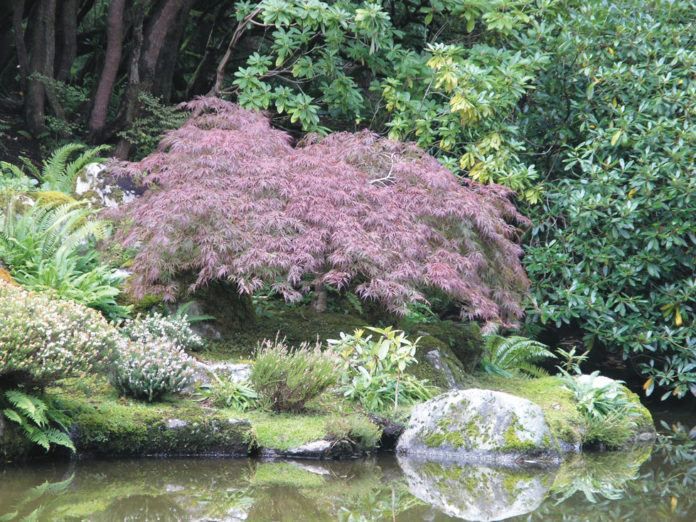A Facebook friend posts photos taken of her yard with lots of turkeys and deer families. How can you not love a picture of those cute fawns covered with spots? There’s something about babies. You know that feeling when you see a new infant and can’t help but gush “how cute and tiny!” It’s universal to be drawn to new life. This applies to other babies in the animal kingdom, too.
At this time of year, last year’s youngsters are being chased away by their deer mothers. In heavily wooded areas their territory may be only the square mile right around where they were born and since they eat about 5 pounds of food per day, this would fill a large garbage bag, your garden is this year’s smorgasbord. Eating mostly semi-woody plants they supplement this with soft foliage and, as we all know, our beloved flowers. They browse, moving from place to place seeking plants that taste good and have a high protein content. Knowing their habits can be to your advantage. Don’t let them make a habit of eating in your garden. Employ some of the following techniques before they print out a menu of your plants.
There are many barriers you can use to keep deer out of your garden like mesh fencing, deer netting, chicken wire or fishing line. Two short fences a few feet apart can also keep them out. Frightening devices that hook up to your hose work well, too. But if you can’t fence your area then the following tips may help.
Protect young fruit and nut trees by encircling the trunk with fencing to a height of 6 ft. You can remove it after the tree has grown taller and can be limbed up.
Plant deer resistant plants as well as plants that deter deer. Make sure deer find the entryway to your garden unattractive. Concentrate deer repelling plants here. Highly fragrant plants jam the deers’ predator-alert sensors and make them uneasy. Try planting catmint, chives, lavender, sage, society garlic, thyme or yarrow around your favorite plants that they usually eat and you may have better luck this year.
Jam their senses with repellents like fermented eggs solids, mint, rosemary oil and garlic. You can buy these ready-to-use or in concentrates and are very effective. The idea is that you spray directly on the plants and the surrounding area two weeks in a row and then afterwards monthly. They stay on the plants through the rain but keeping it fresh during the peak spring browsing period is a good idea. Soap bars are effective for small areas for short periods. You would have to use 450 bars per acre for a large area. Deer get used to the smell of hair real quick and so it isn’t effective for very long. Blood meal and sprays are effective also but can attract predators.
Taste repellents must be sprayed directly on the plants you want to protect and don’t use them on food plants. You can buy hot pepper spray or mix it yourself: 2 tablespoons hot pepper sauce, 1 gal water, 1 tablespoon liquid dish soap. Another spray you can make up yourself: 5 tablespoons cayenne pepper, 1 tablespoon cooking oil, 1 gal water.
My personal list of deer resistant plants that are flourishing in the shade are philodendron selloum, all ferns, liriope, mondo grass, Queen’s Tears hardy bromeliad, aspidistra or cast iron plant, bamboo in containers, podocarpus, carex grass, Japanese maple, fragrant sarcococca, clivia, calla lily, sago palm. douglas iris and hellebore.
There are many deer resistant plants for the sun, too. The main thing is to start using one or several of these ideas now before deer establish feeding grounds for the season.
Jan Nelson, a landscape designer and California-certified nursery professional, will answer questions about gardening in the Santa Cruz Mountains. Email her at ja******@*ol.com, or visit jannelsonlandscapedesign.com.












